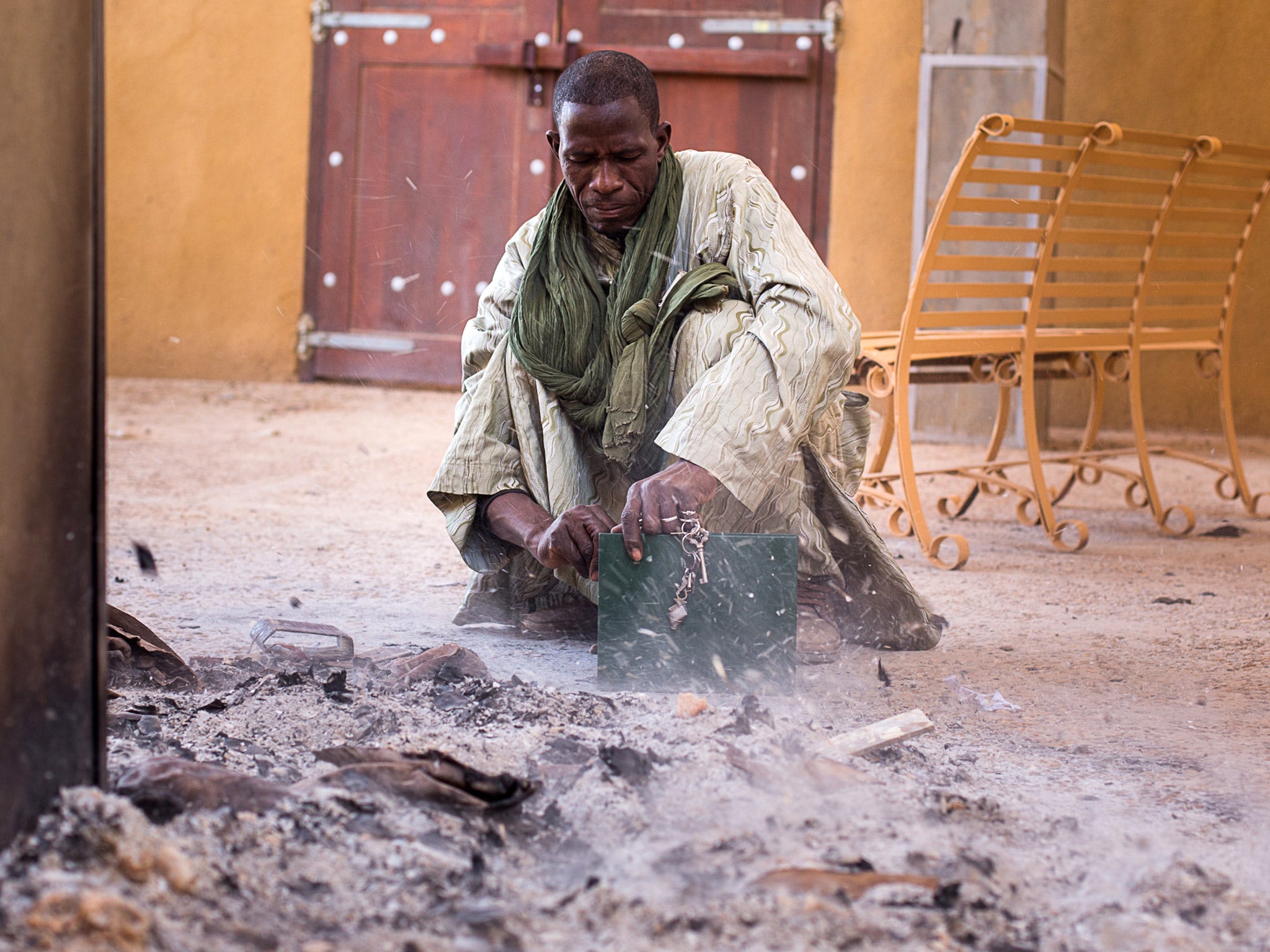'They tried to break the heart of Timbuktu': Mali comes to terms with the destruction of historic manuscripts by Islamists

Mali’s most storied city is in the final hours of its occupation by Jihadists who faced international condemnation and a powerful foreign expeditionary force closing in by land and air.
Frantic preparations were being made to escape into the desert, but there was still time for one last outrage. A group of militants arrived at the gates of the Ahmed Baba library after dark last Wednesday. They told the guards they had come to secure its trove of ancient manuscripts. In fact they had come to ransack and burn one of the Saharan city’s richest cultural collections.
Today, the aftermath was scattered through the passageways of the South African-funded cultural centre. Handcrafted boxes were strewn about the floor alongside charred papers and scorched antique leather bindings. Manuscripts dating back as far as the 13th Century were no more than ashes floating on the morning breeze. The shelves of the reading room had been emptied into heaps on the stone floor outside and burned like rubbish. An unknown number of papers are also thought to have been stolen.
Abdullahi Cisse, a historian and archaeologist who works at the centre, struggled with his words as he surveyed the devastation: “The wealth which has been burned will be impossible to replace,” he said. “These manuscripts were the source of life for this city.”
Among the fragments that survived the bonfire was a cover signed by a long-dead professor from Timbuktu’s University of Sankore. Established in the 1400s it had been the first university in the Maghreb and during its heyday was one of 180 schools in and around the city hosting some 100,000 students.
“For these Islamists, these Jihadis, for them there is only the Koran, everything else is worthless,” said Prof. Cisse. He has no doubt why this collection was targeted even as French forces were beginning to encircle Timbuktu. “They know how much these manuscripts represented to Mali, to Africa and the entire world. They are at war and they wanted to hurt the enemy.”
The catalogue numbers on the boxes are all that remain of the wealth of history, geography, biology, astronomy and theology that once illuminated these documents. The only consolation is that it could have been worse. The Ahmed Baba collection numbers some 30,000 precious manuscripts that had been brought together to be catalogued and conserved in modern conditions. When the black banners of the al-Qa’ida affiliates were first hoisted in Timbuktu in April last year the bulk of the collection was transferred for safekeeping in the capital, Bamako.
Many thousands of other manuscripts are held in smaller libraries in the city or with the families that descended from the Islamic scholars who gave this trading post on the edge of the Sahara its status as a centre of learning. Even when historic tombs and shrines were being vandalised last year, attracting international concern on a par with the Taliban’s destruction of the Buddhas of Bamiyan, the libraries had been left alone.
The institute of Ahmed Baba, a saint and one of Timbuktu’s most revered scholars and Islam, had been thought to be safe. But the role of saints in Timbuktu attracted the particular ire of the militants Islamists who ruled here for ten months. The city and its environs were home to some 333 mausoleums dedicated to saints, many of whose descendants would visit them to worship each Friday. The most famous of them, the Sidi Mohamed shrine, was made a World Heritage site by the United Nations cultural body, Unesco.
Today, as the residents of Timbuktu pull down the last Jihadist banners the shrine is a pile of rubble. Ignoring desperate appeals for moderation were ignored and the militants set about demolishing dozens of the mausoleums, claiming that they elevated false idols to the status of God. Some where chiselled away with hammers, others were rammed with heavy vehicles. At places like the Three Saints Mausoleum locals have already begun to return to their ruined shrines placing the ornate wooden door carefully on the wreckage to give some semblance of order.
This conflict’s damage to the region’s global image will be equally hard to restore. The kidnap and ransom of foreign visitors that flourished since the 1990s has now been compounded by the Islamists’ conquest of northern Mali. Together they have obliterated the tourist trade. Timbuktu’s hotels have fallen into disrepair during the occupation. The once grand Hotel Colombe is a now a collection cracked walls and dust-filled rooms without electricity or running water.
And yet little has shocked the previously tolerant population as much as the violent assault on their multicultural history. Elhadj Djitteye, a resident who once made a living from guiding foreign visitors through the city’s great mausoleums recalled the confusion caused by the militants’ alien doctrine: “Many great powers like the Moroccans have dominated this city but these were the first people to tell us that our saints were blasphemy.”
“They tried to break the heart of Timbuktu.”
Subscribe to Independent Premium to bookmark this article
Want to bookmark your favourite articles and stories to read or reference later? Start your Independent Premium subscription today.

Join our commenting forum
Join thought-provoking conversations, follow other Independent readers and see their replies